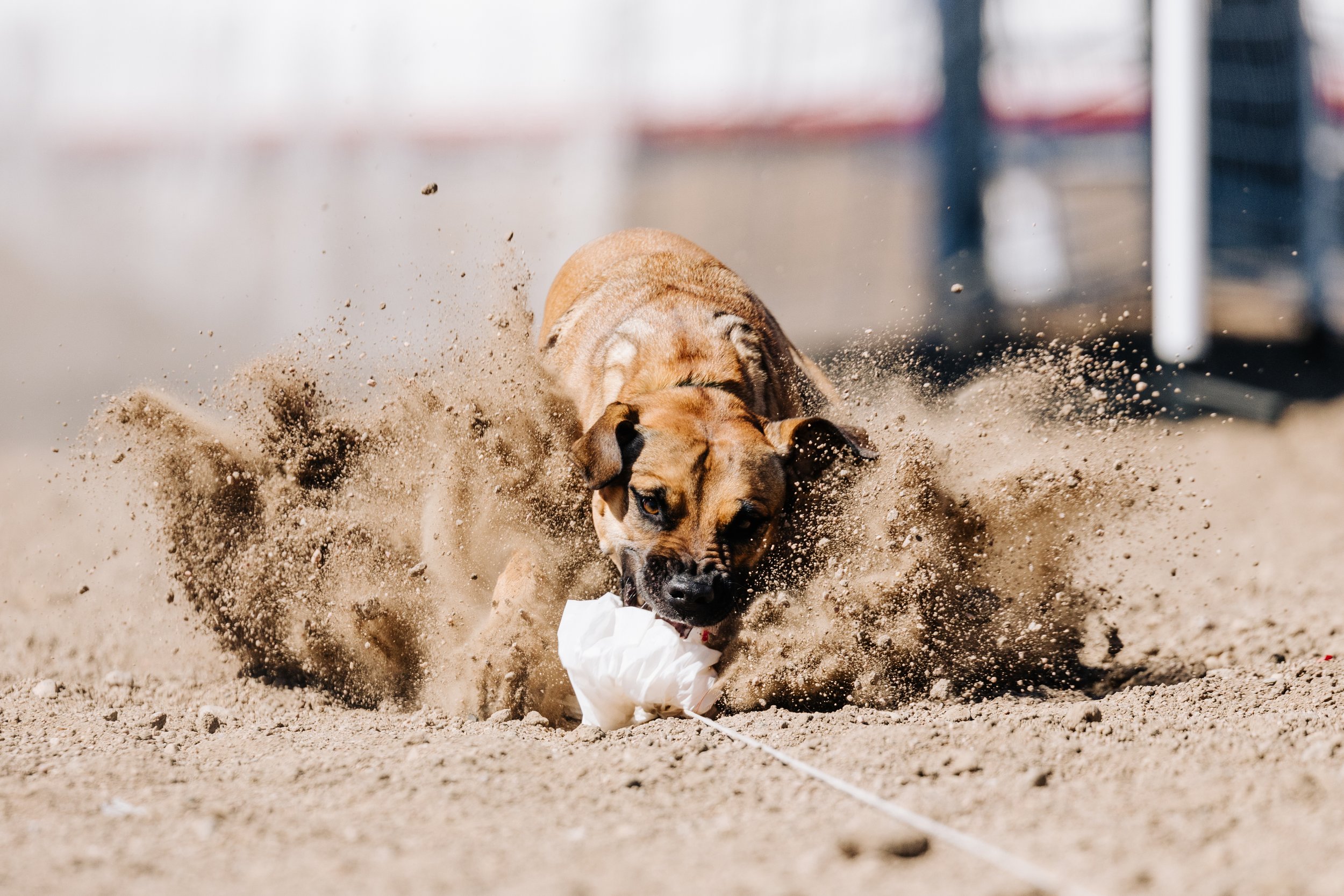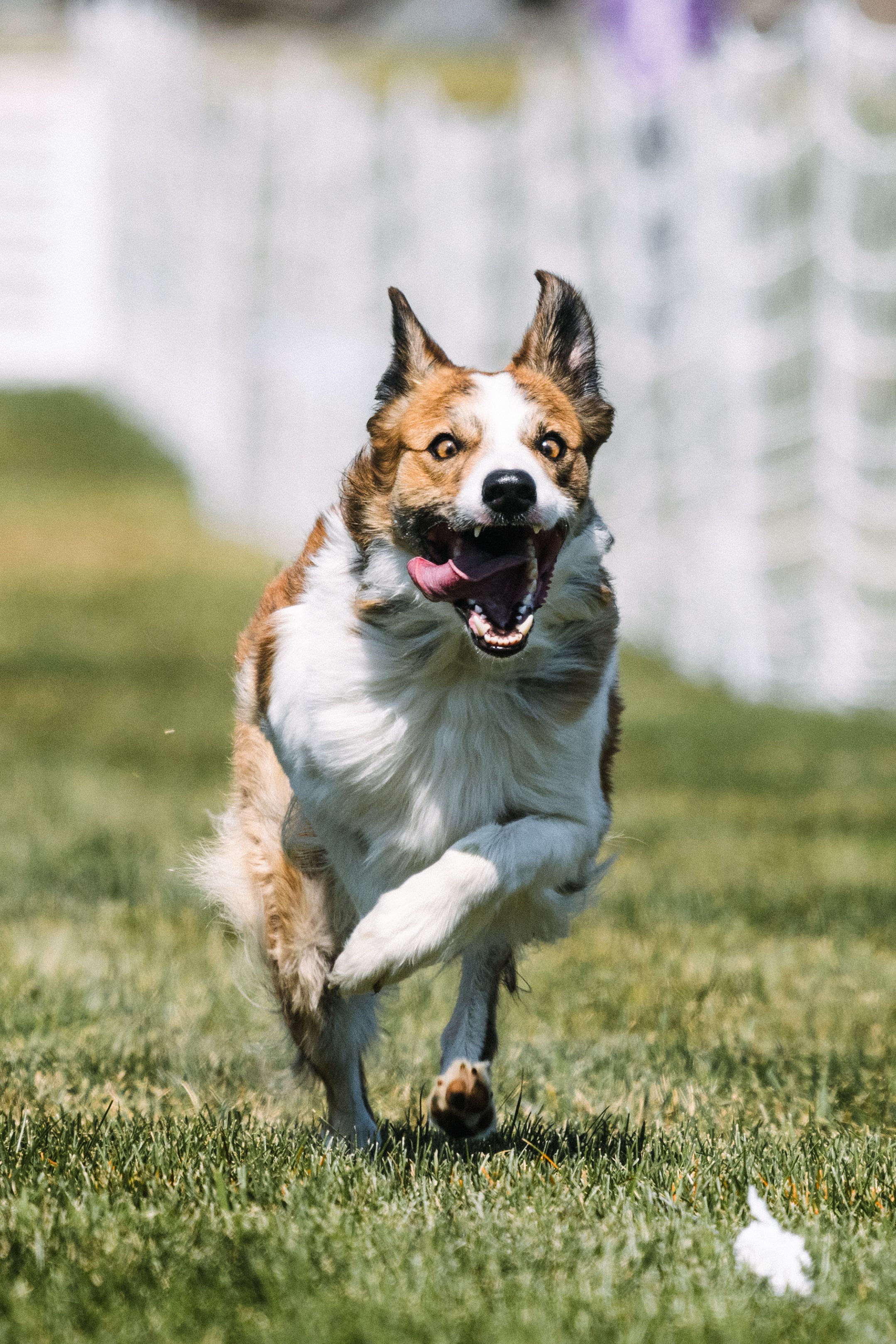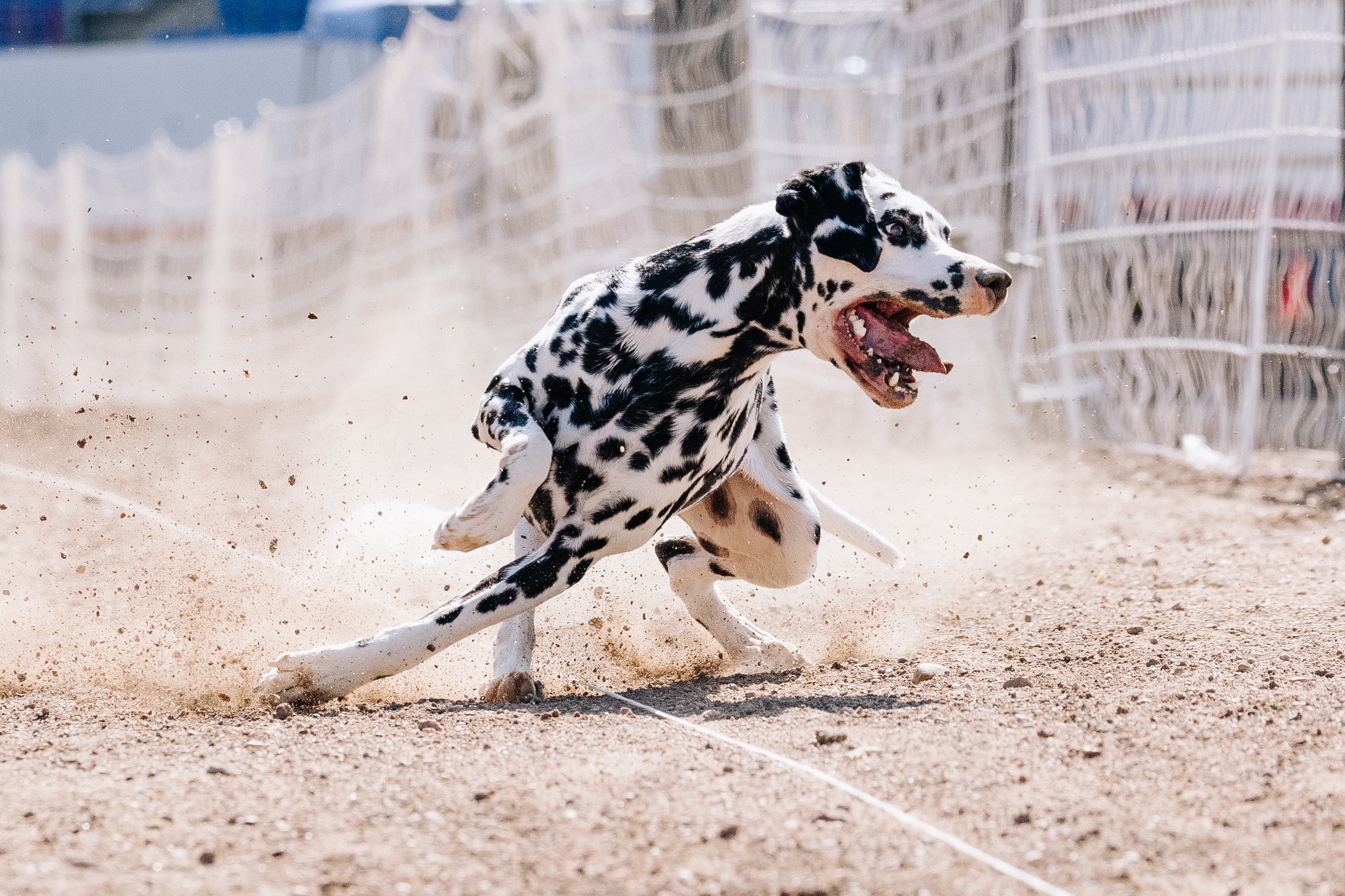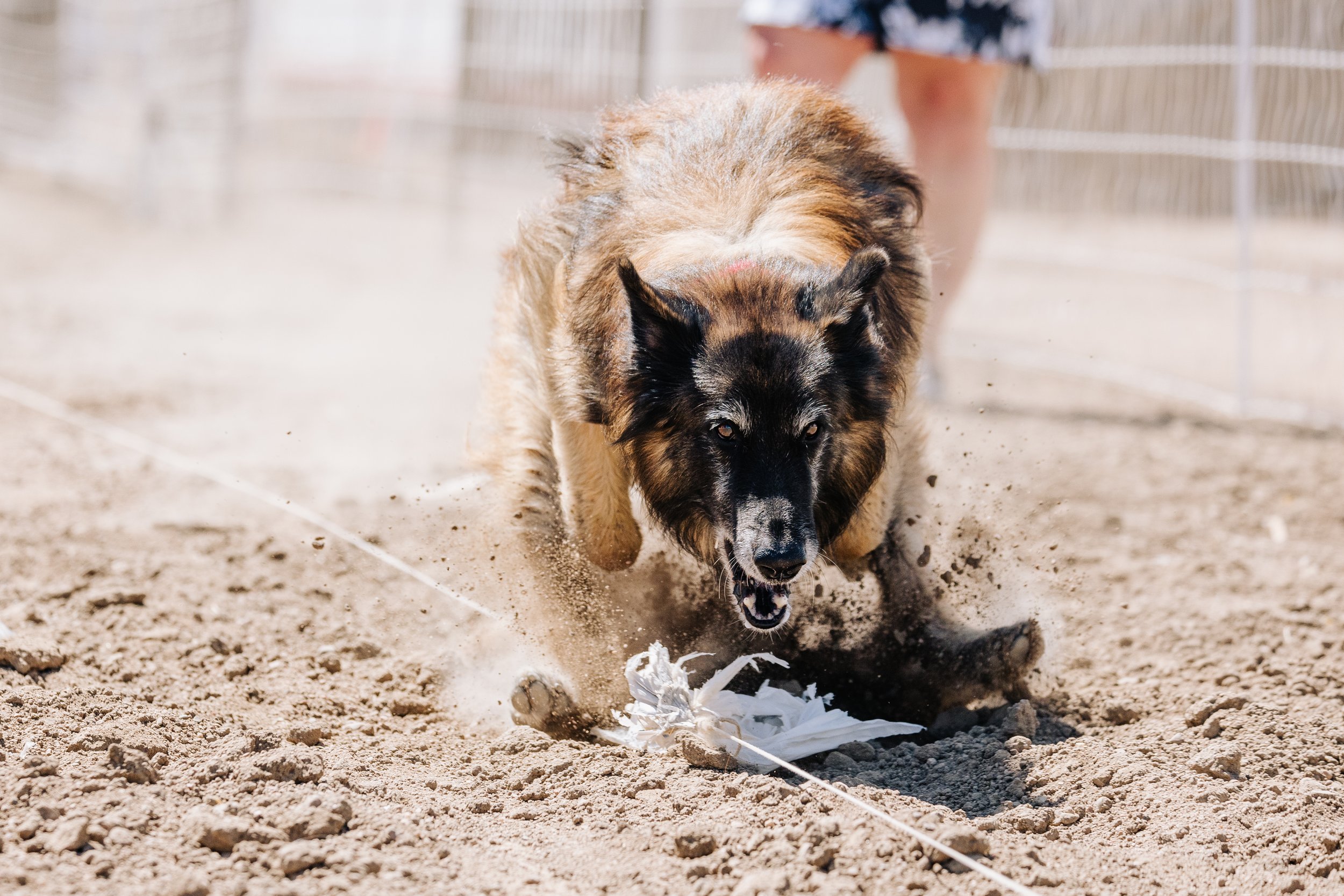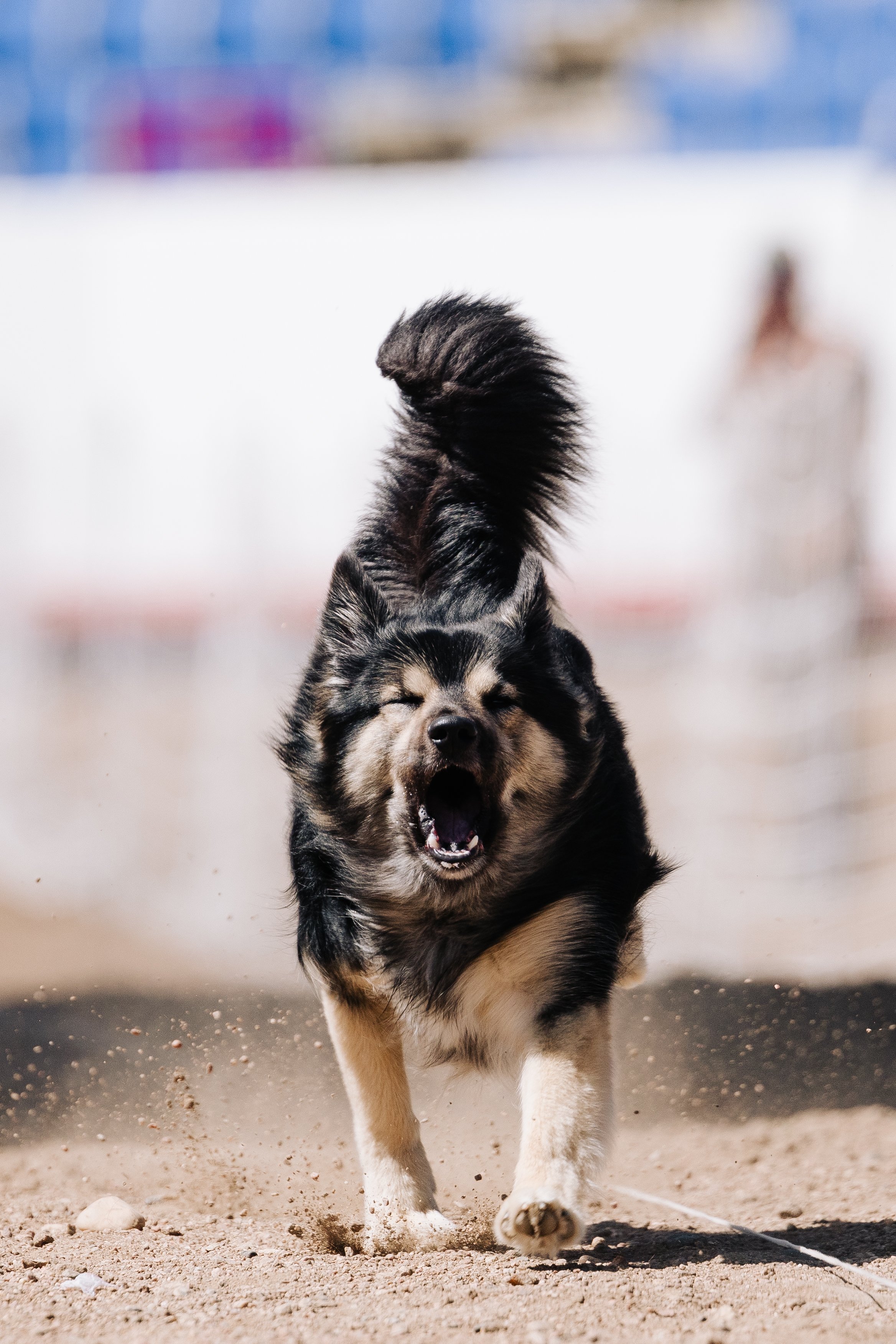Dog Sports for Beginners: Fast CAT
This post contains affiliate links. If you shop using my affiliate links, I will earn a small commission at no additional cost to you. Thank you for supporting my content!
My Golden Retriever is my first sport dog. I didn’t even intend to get involved with dog sports; she just turned out to be such a busy and talented puppy that I needed to give her a “job” and she loved every sport we tried!
There are many benefits to dog sports. They can satisfy your dog’s biological needs. Herding dogs like herding outlets; Retrievers like to retrieve, and scent hounds love to sniff. Providing an outlet for your dog’s strongest instincts can make them really happy!
Another benefit of dog sports is the relationship building. Having fun with your dog is key to developing a strong relationship, and there’s nothing more fun than dog sports! I love cheering my dog on, and she loves playing the game.
What is Fast CAT?
This German Shorthaired Pointer loves catching the plastic game while running Fast CAT.
We got started with Fast CAT in March 2023, when I started photographing dog sport events. Fast CAT, as the name implies, is fast and that makes it an especially fun sport to watch and participate in.
CAT stands for “Coursing Ability Test”. Regular CAT events are 300 or 600 yard courses, but Fast CAT is 100 yards. Dogs routinely run Fast CAT in under 10 seconds!
Fast CAT is a timed 100 yard dash where your dog will chase a plastic bag on a string. The plastic bag mimics a prey animal, so many dogs with high prey drive chase the bag to satisfy their desire to chase small animals!
Not all dogs chase the bag. Many dogs with lower prey drive simply run from the start line to their owner at the finish line. Whether your dog is chasing the bag or recalling to their owner, their score will count for the timed 100 yard dash.
Some dogs get a little confused at first, but with a lot of cheering and calling, most dogs will pick up on the game pretty quickly. My Golden Retriever was confused the first two times she saw a lure, but by her third run, she was speeding down the course!
It’s so much fun to see my dog’s crazy happy face while she runs. She has even figured out that the game is to not just run, but to run as fast as possible, so now it is even more fun for us! I cheer and yell for her as much as I possible can and she runs as fast as she possibly can, and so we make a great team and she is always getting faster!
Dogs That Can Run Fast CAT
Fast CAT is known as a “gateway sport”. A gateway sport is a dog sport with a very low barrier for entry that allows newbies to easily get involved.
Any dog can run Fast CAT - even if they only have one eye!
Any dog can run Fast CAT so long as it is not a female actively in heat or injured in a way that makes running a safety risk. Even tripawds can run – so long as your dog is stable and safe, even with three legs, he or she can run Fast CAT!
One thing that is really great is that Fast CAT is an inclusive sport. Because it is a gateway sport, many different dogs compete (or run just for fun). All breeds and mixed breeds are welcome! Whether you have a purebred Golden Retriever or a Goldendoodle mix, you and your dog are welcome to run Fast CAT.
Any dog can do a Fast CAT fun run. If you want to compete and earn titles, your dog will need to be registered with the American Kennel Club.
If you got your dog from a breeder, your dog is probably already AKC registered.
If you have a rescue dog or mixed breed, your dog might not be registered. That’s okay though – the AKC has the Purebred Alternative Listing and Canine Partners programs that mean any dog can be AKC registered and compete in Fast CAT!
Calculating Your Dog’s Speed and Points
Calculating your dog’s speed is easy! Fast CAT runs are counted to the hundredth of a second. When you receive your dog’s time, convert it to miles per hour using this calculation:
204.545 ÷ your dog’s time = speed in miles per hour
To calculate the number of points your dog gets, multiply your dog’s MPH by their size handicap/height multiplier. For dogs under 12”, the handicap is 2. For dogs between 12” - 18”, the handicap is 1.5. For dogs taller than 18”, the handicap is 1 (meaning that they earn the same number of points as their speed.
Titles Your Dog Can Earn
Ginsburg earned a personal best and her DCAT at this Fast CAT event!
How cool would it be to add some letters after your dog’s name? At the time of writing this article, my dogs’ registered names are Dry Canyon’s Valiant Justice FCAT RATN and Lost Heritage Laphria’s Light BCAT. I love that their official names reflect their talents and the fun we have had together!
There are 3 titles in Fast CAT:
BCAT: earned when your dog reaches 150 points
DCAT: earned when your dog reaches 500 points
FCAT: earned when your dog reaches 1000 points
Points are cumulative, so the count does not reset after each title. Just keep adding them up!
Your dog can still compete in Fast CAT after they earn the FCAT title. For every 500 points after 1000, they will earn the FCAT2, FCAT3, FCAT4, etc.
How to Find a Fast CAT Event
Because Fast CAT is an American Kennel Club event, there are a lot of events across the country! Fast CAT is held outdoors, so you won’t find many events in the winter, but you won’t have any trouble finding events in the spring, summer, and autumn.
You can conveniently find Fast CAT events near you by checking out the AKC Event Search tool on their website. You might have to drive a little ways, but I promise it’s worth it when your dog loves it!
Training Tips for a Successful Run
Sometimes a dog doesn’t pick up on Fast CAT right away. They might not realize you’re standing at the end, or they might be confused by the plastic bag. Fortunately, you can help train your dog to understand and enjoy the game, and it doesn’t even take that long!
Have a stranger release your dog at the start while you catch at the finish
This Standard Poodle loves Fast CAT so much that he often lunges for the bag face-first!
Unless it isn’t safe for a stranger to hold your dog, try having one release your dog. There are usually many people willing to help release at Fast CAT events — all you have to do is ask! Meanwhile, you should be the one “catching” your dog at the end of the track.
At this point, I could release my dog, no problem. She’s been playing the game for almost a year and has it totally figured out. But dogs are usually trained not to run away from their owners, so Fast CAT is counter to everything they know!
If a stranger releases your dog, the dog might be slightly uncomfortable and want to get back to you. And with you at the end, they will want to come back to you! It just feels more natural for your dog to run towards you, especially if they don’t know the game yet.
Call your dog, and make it loud
Everyone likes positive encouragement. Plus, Fast CAT is a sport where the dog is allowed to go crazy and run as fast as they can. You can hype them up as much as you want. The louder, the better! Your dog will be so excited that you are so excited that they will run faster than ever!
Stand several feet back from the finish line
This is just the basic mechanics of running. Your dog might be excited to see you, but they don’t want to crash into you! This means they will naturally slow down as they get to you. If you stand right at the finish line, your dog will start slowing down before reaching the timer! Since the dash is timed, you want your dog to finish strong. Make sure you stand at least four or five feet behind the finish line (or even further!) so your dog is still running super fast across the line.
Run away from your dog
Dogs have a strong instinct to chase, and they love to play with their people. When your dog is about two-thirds of the way down the course, start running away from them! Their chase instinct will kick in and they will finish strong to play the game of chasing you.
Play with a plastic bag at home
Your dog might not understand that the plastic bag is a fun toy. But the more they want to play with the bag (or bite the “bunny” as it were), the faster they will run. You can train for Fast CAT at home simply by playing tug and chase with your dog using a plastic bag. If you have a flirt pole, you can even tie the bag onto the end of the line. This will help your dog learn that the bag is fun and exciting!
Exercise your dog regularly
This is more about conditioning than training, but if you want to help your dog run fast, make sure you exercise them. Take them to the park and play fetch, organize play dates with other dogs, or take them along on your run. Staying in shape and building muscle for running will help your dog succeed at Fast CAT.
Capturing Fast CAT Memories
And of course, it’s always fun to capture memories of your dog running Fast CAT! I focus on dog sports photography and Fast CAT is one of my favorite dog sports to photograph. If you know any upcoming events in the Northeast that don’t have a photographer yet, please contact me!
If there’s not a photographer at your event, you can still capture those memories. If you’re capturing video, stand to the side of the line and video your dog while you are standing. This angle will allow you to capture the majority of your dog’s run.
If you’re taking photos of your dog running Fast CAT, kneel down to capture your images. The closer you are to the ground, the closer you are to your dog’s eye level. Being at or below your dog’s eye level will create a more intense photo that emphasizes your dog’s expression while running.
Please remember, if your event already has a photographer, it is considered rude to bring your own camera, even if you’re a professional photographer. Please support us small businesses and our art by purchasing your photos through us. (Unless your photographer is also doing video, feel free to film your run!)
Check out my Fast CAT photography!
Other posts you might like:
Train Your Dog to Run Faster in Fast CAT
How to Find a Fast CAT Event Near You
Frequently Asked Questions about Fast CAT
How do you measure a dog for Fast CAT?
A dog’s height is measured from the ground to their shoulders.
What is the difference between Fast CAT and lure coursing?
Fast CAT is a 100 yard straight dash and is open to all breeds and mixed breeds that are registered with the AKC. The regular CAT has 300 or 600 yard courses that may zig zag and is open to all breeds and mixed breeds that are registered with the AKC. Lure Coursing is a 600+ yard course that may zig zag and is only open to sight hound breeds.
Are lure coursing sports safe for dogs?
This depends on who you talk to and who you run with. Lure coursing sports are known to cause more injuries than many other dog sports. Some people will not run their dogs in CAT events because they don’t feel the zig zag course is safe; others will not run their dogs in Fast CAT events because they don’t feel dogs have enough time to slow down after the dash.
There are things that can mitigate the risk of injury. Run with a club that has a long run out after the timing mechanism so that your dog has appropriate time to slow down. If your dog is likely to run off, run with a club that has a fully fenced course.
As always, use your own discretion as to what is safe for your dog, and err on the side of caution. It may help to go view a Fast CAT event to get a sense of what the course looks like and how certain breeds tend to run and slow down. Please consult your vet prior to running an event.
Can my puppy compete in Fast CAT?
No. Dogs must be at least 1 year old to compete in Fast CAT. However, many events will also offer “fun runs” where the dogs just run for fun and to learn the sport. Fun runs are usually less expensive than official runs. Different clubs may have different rules about puppy ages for fun runs, so contact your club in advance!
Can my dog participate if she is in heat?
No. There is an inspection before running to ensure that your dog is not in heat. If your dog does not “wipe clean” then she will not be permitted to run.
GET TO KNOW CHARLOTTE
Charlotte Lehman is a passionate dog mom, a dog sports photographer, and enjoys sharing her experience from a decade of dog ownership through her blog.
Based in Geneva, New York.





